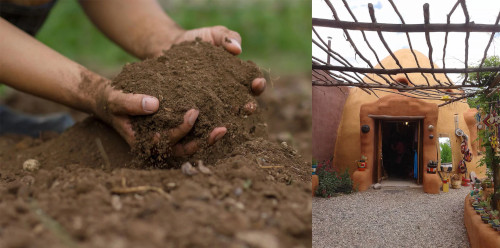The Pros and Cons of Living in an Earthbag House

Have you ever heard of an earthbag house? It’s a unique and eco-friendly housing option that’s gaining popularity among those looking for alternative living arrangements. But before you decide to build or buy one, it’s important to understand the potential benefits and drawbacks of this type of home.
Earthbag houses are affordable and eco-friendly.
One of the biggest advantages of living in an earthbag house is the affordability and eco-friendliness of the building materials. Earthbags are made from natural materials like soil, sand, and clay, which are readily available and inexpensive. Additionally, earthbag houses are highly energy-efficient, which can save you money on heating and cooling costs in the long run. Plus, the use of natural materials means that earthbag houses have a low environmental impact, making them a great choice for those who want to live sustainably.
They are durable and resistant to natural disasters.
Another advantage of living in an earthbag house is their durability and resistance to natural disasters. Earthbag houses are incredibly strong and can withstand earthquakes, hurricanes, and other extreme weather events. This is because the materials used to construct them are flexible and can absorb the impact of these events without collapsing. Additionally, earthbag houses are fire-resistant, which can provide peace of mind for those living in areas prone to wildfires. However, it’s important to note that proper construction techniques and materials must be used to ensure the durability and safety of the structure.
Earthbag houses require a lot of manual labor and time to build.
One of the biggest drawbacks of living in an earthbag house is the amount of manual labor and time required to build one. Unlike traditional homes that can be built quickly with the help of heavy machinery, earthbag houses require a lot of physical labor to fill and stack the bags. This can be a daunting task for those who are not used to manual labor or have physical limitations. Additionally, the construction process can take several months to complete, which may not be feasible for those who need a home quickly. However, some people find the process of building their own home to be a rewarding and fulfilling experience.
They may not be suitable for all climates.
Another potential drawback of living in an earthbag house is that they may not be suitable for all climates. Earthbag houses are typically designed for warm and dry climates, as the thick walls provide insulation from the heat. However, in colder and wetter climates, the walls may not provide enough insulation, leading to higher heating costs and potential moisture issues. It’s important to consider the climate of the area before deciding to build an earthbag house.
Earthbag houses may not be as aesthetically pleasing as traditional homes.
One potential drawback of living in an earthbag house is that they may not be as aesthetically pleasing as traditional homes. The thick walls and rounded shape can give the house a unique and rustic appearance, which may not be to everyone’s taste. Additionally, some homeowners associations or local zoning laws may not allow for alternative housing options like earthbag houses, which could limit your options for building or purchasing a home. It’s important to consider the potential impact on resale value and neighborhood aesthetics before deciding to build or purchase an earthbag house.

Martin
- Earthbag, Earthbag / Superadobe Construction, Superadobe
- Aesthetic Appeal, Affordable Housing, Alternative Living Arrangements, Building Challenges, Climate Considerations, Disaster Resistant Homes, Earthbag Construction Techniques, Earthbag House, Earthquake Resistant, Eco-friendly Housing, Energy Efficiency, Fire-resistant Homes, Green Building, Low Environmental Impact, Manual Labor in Construction, Natural Building Materials, Rustic Home Design, Superadobe, Sustainable Living, Traditional vs. Alternative Homes


